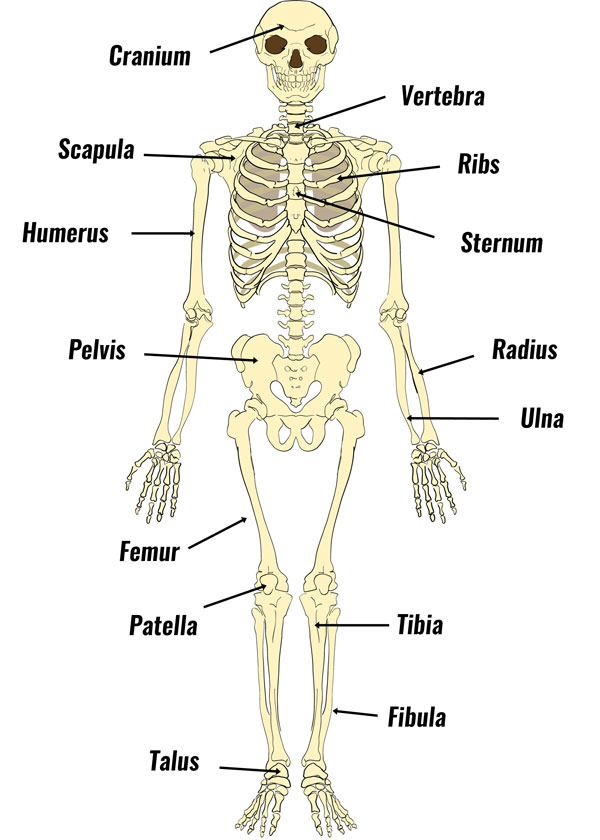The Skeleton System
From time to time we would normally ask our selves this question, are bones alive? From seeing a skeleton you might wonder if bones are just dead hollow structures. But in a living person, those hollow spaces are full of living cells. bones also have blood supply and nerves. I have cone the the conclusion that bones are living tissue.
Can you imagine not having bones? What would you look like? you would be soft, frail, muscles and internal organs inside the skin. you might just look like a lump of clay. Clearly, bones are needed to support and shape the body. They have several other important roles as well. As we go further in this blog you will learn of them.
Bones are the main organs of the skeleton system. the adult skeleton system is made up of a whooping 206 bones, with majority of those bones in your hands and feet. You will see many of these bones on the skeleton system below.
Bones are connected two ways. they are connected by cartilage and ligaments.
- Cartilage is tough and flexible. it covers the ends of bones where they meet. It is the main type of connective tissue that is seen throughout the body. It serves a variety of structural and functional purposes and exists in different types throughout out joints, bones, spine, lungs, ears and nose.
- Ligament is like an elastic band, they connect bones together. They gives joints support. Ligaments can be found around your knees, ankles, elbows, shoulders and other joints. Too much stretching or tearing them can cause your joints to be unstable.
Function of the Skeleton System
The skeleton system gives your body shape and form, but it also plays other roles. Here are the main function of the skeleton system:
- Aid in movements: the skeleton system supports your body to help you stand and move. Joints, connective tissue and muscles work together to make your body parts moveable.
- Produces blood cells: Bones contain marrow, red and white blood cells are made in the bone marrow.
- Protects and supports you soft organs: The skull protects your brain, the ribs protects the heart and the lungs, while the backbone protects the spine.
- Storage: The bones store calcium and vitamin D. They contain more calcium than any other organ.
Joints
This is the place where two or more bones meet. There are three types of joints in our body. These joints are based on the amount of movement in the joint. these joints are called moveable, partly moveable and immoveable.
- Immovable joints do not allow the bones to move at all. In these joints the bones are fused together. An example of immovable joint is the skull.
- Partly movable joints allow very little movement.
- Movable joints allow all the movements. These joints are notable, they are complex. they contain special cushions, liquids and ligaments. The cushions and liquid aids in friction reduction. There are several different types of movable joints, the picture below shows three;
Bones
Some people think bones are like chalk dead, dry, and brittle. In reality, bones are very much alive. Bones are living organs. They are supplied with blood and nerves just like other parts of your body.
How Bones Grow and Develop
An unborn developing baby's skeleton is made entirely of cartilage. The relatively soft cartilage slowly changes to hard bone. By the time a baby is born, only several areas of cartilage remain. These areas include the ends of the long bones in the arms and legs. This allows these bones to keep growing in length during childhood.
By the late teens or early twenties, bones stop growing. By this time almost all cartilage has been replace by bone. Bones cannot grow in length after this point. However, bones can continue to grow in width. This is due to being placed under more stress. Weightlifter develop very thick bones because they are lifting a lot of weight on a regular basis. To have strong bones, exercise is important.
A YouTube video is available to see more information in the form of a song.


Comments
Post a Comment